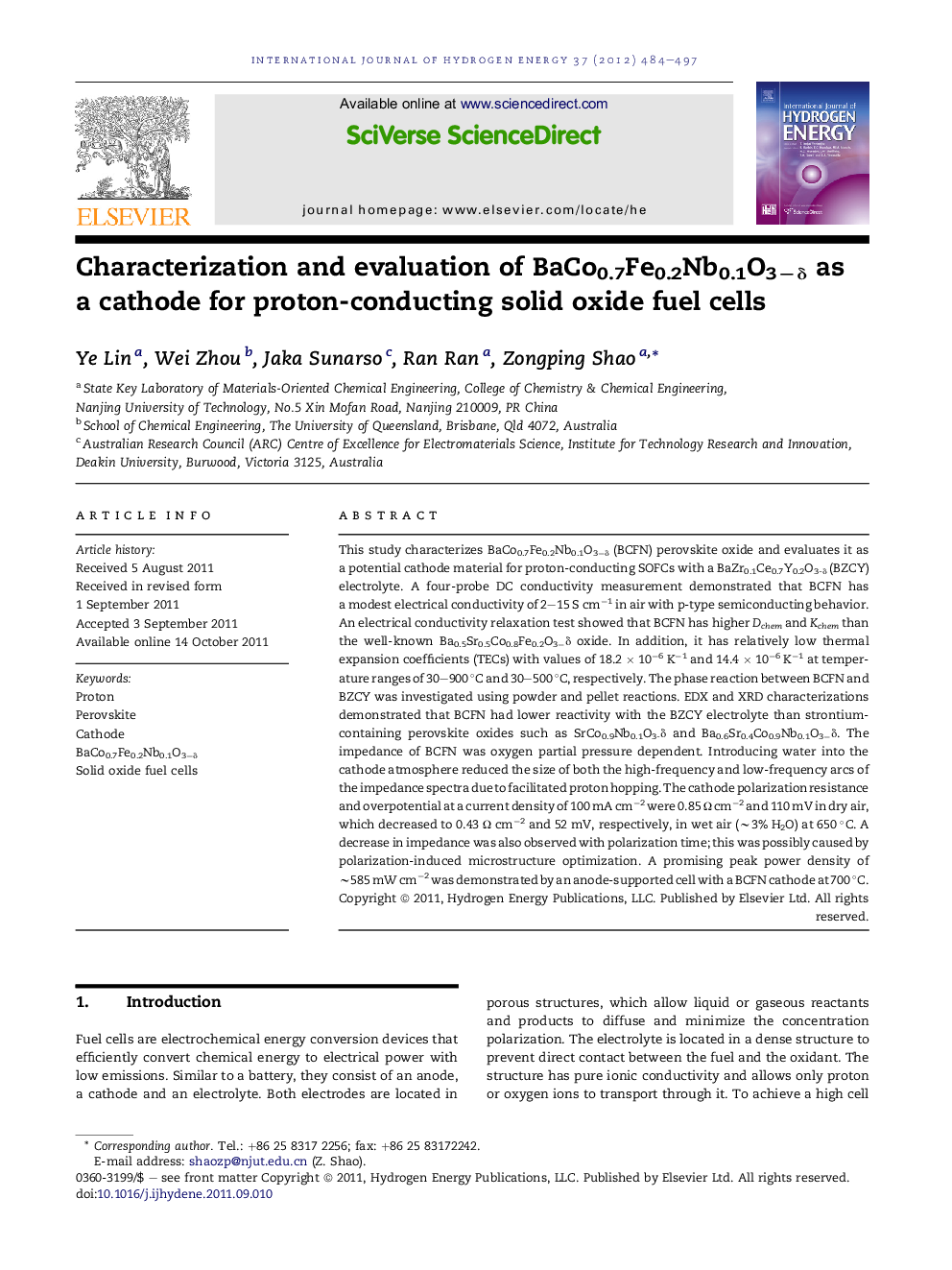| Article ID | Journal | Published Year | Pages | File Type |
|---|---|---|---|---|
| 1277162 | International Journal of Hydrogen Energy | 2012 | 14 Pages |
This study characterizes BaCo0.7Fe0.2Nb0.1O3−δ (BCFN) perovskite oxide and evaluates it as a potential cathode material for proton-conducting SOFCs with a BaZr0.1Ce0.7Y0.2O3-δ (BZCY) electrolyte. A four-probe DC conductivity measurement demonstrated that BCFN has a modest electrical conductivity of 2–15 S cm−1 in air with p-type semiconducting behavior. An electrical conductivity relaxation test showed that BCFN has higher Dchem and Kchem than the well-known Ba0.5Sr0.5Co0.8Fe0.2O3−δ oxide. In addition, it has relatively low thermal expansion coefficients (TECs) with values of 18.2 × 10−6 K−1 and 14.4 × 10−6 K−1 at temperature ranges of 30–900 °C and 30–500 °C, respectively. The phase reaction between BCFN and BZCY was investigated using powder and pellet reactions. EDX and XRD characterizations demonstrated that BCFN had lower reactivity with the BZCY electrolyte than strontium-containing perovskite oxides such as SrCo0.9Nb0.1O3-δ and Ba0.6Sr0.4Co0.9Nb0.1O3−δ. The impedance of BCFN was oxygen partial pressure dependent. Introducing water into the cathode atmosphere reduced the size of both the high-frequency and low-frequency arcs of the impedance spectra due to facilitated proton hopping. The cathode polarization resistance and overpotential at a current density of 100 mA cm−2 were 0.85 Ω cm−2 and 110 mV in dry air, which decreased to 0.43 Ω cm−2 and 52 mV, respectively, in wet air (∼3% H2O) at 650 °C. A decrease in impedance was also observed with polarization time; this was possibly caused by polarization-induced microstructure optimization. A promising peak power density of ∼585 mW cm−2 was demonstrated by an anode-supported cell with a BCFN cathode at 700 °C.
► Electrical conductivity relaxation tests show BCFN has even higher Dchem and kchem than the well-known BSCF oxide. ► BCFN has better chemical stability with BZCY than SCN and BSCN. ► BCFN shows lower ASR in wet air than in dry air. ► BCFN shows low overpotential and good stability during the polarization tests. ► We achieve high fuel cell performance while using BCFN as the cathode and BZCY as the electrolyte.
